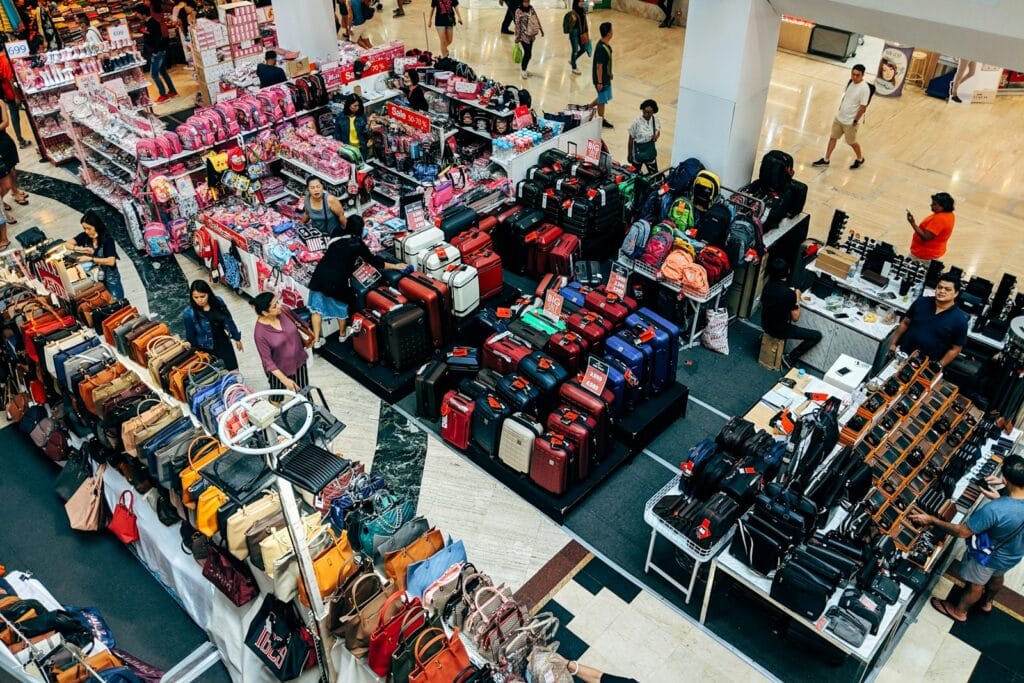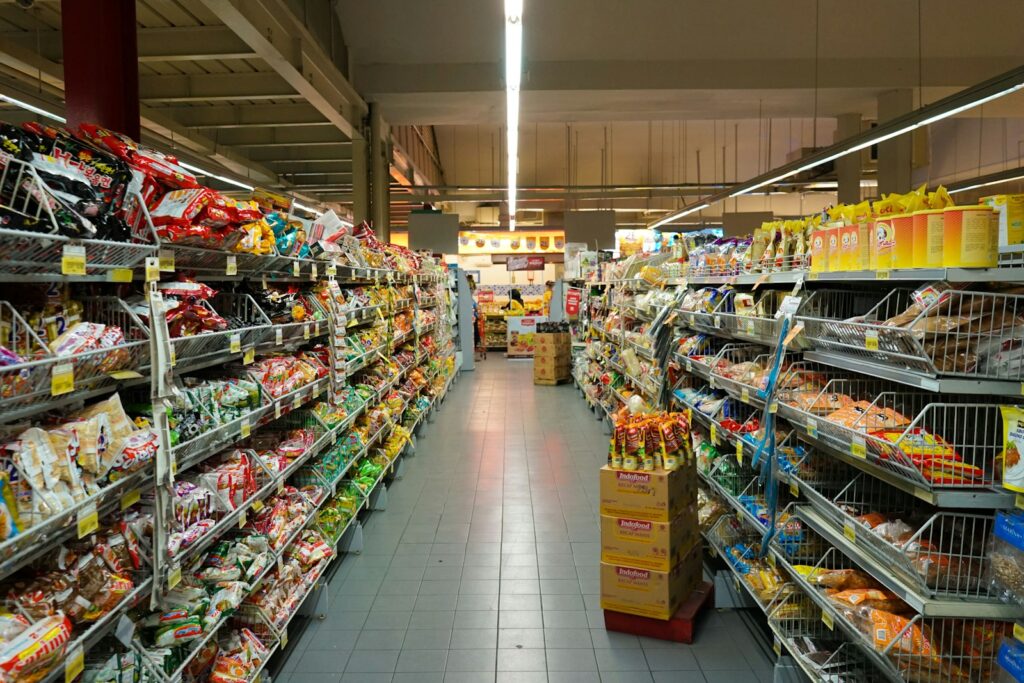
Shoplifting evolved from an insignificant annoyance to a massive financial drain in the billions annually on American companies. Shoplifting extracted an estimated $45 billion in losses from stores in 2024, a figure projected to increase over $53 billion by 2027. This astronomical surge presents a bleak prognosis for store owners fighting thinning profit margins and rising security costs. It’s not merely a shoplifting issue; it’s an advanced scheme of criminal business and opportunistic taking that’s reshaping the retail environment.
The numbers are sobering. In 2023, the U.S. experienced 1.15 million reported cases of shoplifting, the most since 2019 with a staggering 93% rise in incidents from four years ago. Every theft, averaging $461.86 lost in 2020, erodes retailers’ bottom lines, causing them to increase prices or swallow losses. This domino effect touches consumers, who ultimately pay the price for these crimes in the form of increased costs or decreased product offerings.
Understanding what’s being stolen and why is the only way to take back. From high-tech gadgets to everyday essentials, thieves swipe what’s easy to pilfer and easy to resell. This report delves into the top ten most shoplifted items in America, weaving on-the-ground anecdotes, data-driven insights, and actionable security guidance together to help retailers protect their stores and communities from this new plague.

1. Ink Cartridges
Ink cartridges would not on the surface seem to be a likely target, yet their small size and great value for money make them a thief’s bonanza. Organized criminal groups, including one commanded by a mastermind called “The General” in Manhattan, have turned ink stealing into an art form. According to the New York Post, his crew used vests with hidden pockets to swipe HP and Epson printer cartridges from stores like Best Buy and Staples, amassing thousands of stolen goods over years. These aren’t whim jobs they’re planned, with crooks capitalizing on the profitable black-market value for printer ink.
It’s not unique to New York. Three men in California were apprehended by a Utah television station for the theft of thousands of dollars’ worth of ink cartridges, which the men would sell in their home state. The interstate operation is one of the ways that organized retail crime (ORC) thrives on easily exported and easily sold merchandise. Office Max is among the stores that have reported losses of more than $10,000 through ink theft alone, which gives an indication of the financial loss to individual stores as well as the industry as a whole.
In retaliating, retailers are raising the stakes. Below are some effective ways to protect ink cartridges:
- Locking Mechanisms: Put valuable items in secure cases or hooks to restrict access.
- Advanced Alarms: Place motion-sensing burglar alarms to catch thieves red-handed.
- Trained Staff: Alert workers, such as the Office Depot security officer who alerted police, play a key role in halting theft. Between 2019 and today, 69% of retailers have implemented locking devices, a trend that’s preventing millions in potential loss.

2. Red Bull Energy Drinks
Red Bull and other energy drinks are not screaming “high-value target,” but resale value and popularity qualify them as the go-to target of shoplifters. In Riverdale, New Jersey, a Daily Record report demonstrated how three people loaded a Walmart cart with $160 worth of Red Bull and skipped out on the store. This boisterous, little-time thievery is part of an added trend in which everyday commodities translate into big losses for retailers nationwide.
What is it about energy drinks that makes them so appealing to thieves? High demand and quick turnover make them easy to resell, to corner stores or online markets. The New Jersey case revealed drug paraphernalia on the suspects’ person, showing some steal to buy addictions, and others sell to a thriving black market. These kinds of thefts might seem small scale, but with over 1 in 5 Americans reporting shoplifting, the aggregate effect is staggering.
Traders are fighting back with practical tools:
- Electronic Surveillance: 72% of retailers used electronic article surveillance (EAS) tags in 2023 to deter theft.
- Store Layouts: Positioning high-turnover products like Red Bull near checkout counters reduces theft opportunities.
- Staff Awareness: Screening workers to detect suspicious activity can catch thieves before they get away. These steps, combined with the 44% of retailers now using deterrence tags in all stores, show determination to combat this chronic issue.

3. High-End Headphones
High-end headphones like Bose and Beats by Dre are a criminal’s goldmine due to their premium costs and resale value. The Manhattan gang run by “The General” targeted Bose QuietComfort 35 headphones, filling them into hidden pockets to offload them in a hurry. But it’s not merely petty shoplifting The LA Times reported on a $250,000 heist of headphones from a California warehouse, where robbers breached walls to steal over 100 pairs.
These reports indicate the attraction of high-end electronics: they’re compact, expensive, and always in demand. Law enforcers warn that stolen headphones can always end up on websites like eBay or Craigslist, sold at significantly discounted prices to unwitting consumers. As 62% of stores reported an increased concern regarding organized retail crime during 2023, it’s clear that these sophisticated shoplifts are increasing.
Retailers are countering with strong defenses:
- Merchandise Locks: 78% of multi-location retailers use locking cases or cages for electronics.
- Warehouse Security: Advanced alarms and perimeter security help secure valuable inventory.
- Online Monitoring: Tracking suspiciously low listings on marketplaces can help recover stolen merchandise. These habits are significant as headphones remain an irresistible target for organized crews as well as individual opportunists.

4. Fitbits
Fitbits and wearable technology are vulnerable targets since they are small and of high resale value. The Manhattan crime ring only stooped to the level of taking headphones; they took Fitbits as well, knowing that their portability makes it easy to steal and resell. Inforum published a report on a North Carolina incident where students at a college were arrested for stealing Fitbits from a Walmart, a case that was repeated in Tennessee and Georgia states.
Why Fitbits? They’re tiny enough to be pocketed or tucked away in a purse, and their popularity ensures a consistent black-market availability. With 1 out of 4 teens admitting to shoplifting, these gadgets are especially irresistible to teens who can easily sell them for cash. The ease of concealability and resale make Fitbits a retailer’s constant headache.
To protect these highly sought-after devices, stores are introducing:
- Locking Cases: 69% of retailers increased deployment of secure displays between 2019 and 2023.
- Security Officers: 75% of retailers had uniformed officers on duty in 2023 to deter theft.
- Inventory Audits: Regular inventory audits catch losses early. These strategies are allowing retailers to stay one step ahead of high-tech thieves.

5. Razors
Razors, especially high-end shaving systems, are a perennial favorite among shoplifters, commonly stored behind glass at pharmacies like Walgreens and CVS. A Chicago Tribune article humorously noted that razor thefts are spurred by black-market demand, not a sudden urge to shave. Those small, pricey items are easy to conceal and have a steady resale customer base, so they’re a repeat offender.
Thieves operate during off-peak or restocking hours when there are less guards. The “Health and Beauty” department, made up of razors, cosmetics, and perfumes, is a hotbed for organized retail crime. Their long shelf life and popularity make it easy for thieves to exchange stolen blades for money in an endless cycle of theft.
Stores are retaliating with:
- Locked Displays: Cases for razors are now the standard in most stores.
- Video Monitoring: Improved cameras monitor risk areas.
- Loss Prevention Teams: 64% of retailers employed full-time personnel between 2019 and 2023 to deal with theft. These multi-layered defenses are crucial in protecting daily essentials turn into black-market gold.

6. Baby Formula
Baby formula’s position as a household staple that makes its thievery popularity all the more concerning. The New York Post exposed a “thriving black market” for formula where organized syndicates have stolen thousands of dollars’ worth to resell to anxious parents. In an incident in Utah, three were arrested for stealing formula, demonstrating the nationwide scope of the crime.
The shelf-stable and high-value nature of baby formula make it a prime target for bulk shoplifting. Stolen cans enter illegal markets, where they’re offered at reduced price, endangering retailers as well as consumers. This form of shoplifting, classified under the “Children’s Items” category, demonstrates the extent to which even essentials are not immune to exploitation by crime.
Retailers are fighting back with:
- Video Verification: Enhanced surveillance watches over formula shoplifting in real-time.
- Secure Shelving: Locking cases guard high-value essentials.
- Staff Training: Training staff to identify patterns of theft diminishes losses. As 64% of retailers are augmenting loss prevention groups, the industry is serious about this crisis.

7. Makeup
Makeup’s high price and minuscule size make it a shoplifter’s dream, coveted by high-end thieves and opportunists alike. NJ.com reported on a February incident in which two people stole cosmetics from a Glassboro CVS, a scenario repeated nationwide. College campuses too have seen such thefts as students steal makeup to survive, illustrating the numerous reasons behind such acts.
Cosmetics are the standard high-value, easily concealed product, such as ink cartridges or Fitbits. Black-market value is spurred by continued demand and the impracticality of tracing stolen product after resale. The “Health and Beauty” category is the target of ongoing prevalence, led by makeup.
Retailers are pushing back:
- EAS Tags: 72% of retailers use electronic surveillance tags to deter theft.
- Locked Displays: Protective cases are now more common for cosmetics.
- Employee Surveillance: Educating employees to monitor high-traffic aisles eliminates loss. These measures help, though, since the appeal of cosmetics keeps it at or near the top of thieves’ lists.

8. Alcoholic Beverages
Alcohol is a tried-and-true shoplifting staple, with stories of New Hampshire to South Carolina offenses filling local headlines. A case of beer or bottle of whiskey, alcohol’s amenity value makes it a prime target for both resale and personal use. Organized resellers exploit this, quickly reselling pilfered bottles for profit.
The “Food and Beverage” category, including alcohol, experiences ongoing theft with high unit values and rapid turnover. Theft is made easier with hectic stores or lackadaisical security to sneak bottles into attire or bags, where they can sell them to local retailers or consumers. The dual consumption or gain of theft keeps alcohol in its hot seat.
Safeguards are being tightened by retailers:
- Limited Access: High-end alcohol is usually kept behind counters.
- Surveillance Systems: Liquor aisles are closely monitored with cameras.
- Security Officers: 75% of the stores had uniformed officers installed in 2023. These are in an attempt to curb a problem as old as the idea of retailing.

9. Clothing
Clothing, from designer labels to printed T-shirts, is a staple of shoplifting, with expensive brand-name items carrying high resale value. Arkansas Online reported on an after-hours burglary at a Little Rock Plato’s Closet, with thieves carrying away $3,000 worth of second-hand clothing in a broken window that didn’t trigger the alarm. It demonstrates that even smaller retailers aren’t safe.
The “Apparel” category, including sportswear and denim, is vulnerable due to its portability and consumer popularity. Burglars can roll up products into bags or just take them out of the store, making it hard to catch them. Professional rings and individual shoplifters also steal garments due to its ease of resale on platforms like eBay.
Retailers are fighting back with:
- Increased Alarms: Sophisticated systems with motion sensor bar break-ins.
- Locking Hooks: 69% of sellers use secure fixtures on high-value apparel.
- Security Staff: Additional staff prevent crime in real time. These measures are critical as theft of apparel continues to drain retailers.

10. Meat
Even perishable food items like meat are not secure, with Vice reporting heroin users in cities stealing beef and chicken to finance drug habits. A burglar who stuffed steaks and chicken breasts into his pockets sold them at a corner garage to earn cash in a hurry. That simple link between shoplifting and addiction is characteristic of the desperation driving some retail crime.
Strength of meat lies in its quick resale value, although it’s perishable. “Food and Beverage” is a category that suffers consistent losses as thieves exploit demand for inexpensive food from black markets. Meat is often placed on open shelves of supermarkets, so they face particular challenges.
Store owners are fighting back with:
- Surveillance Upgrades: Meat sections are under close surveillance by cameras.
- Inventory Control: Regular stock checks catch thieves in the act.
- Visible Security: 76% of store owners reported heightened concern in 2023, and they demanded extra guards. The steps are aimed at protecting even the most unexpected targets.
The $45 billion retail theft crisis is America’s stores’ call to action. From meat to ink cartridges, everything is stolen by crooks, ranging from products with black-market value to desperation theft. Merchants are fighting back with advanced alarms, locking mechanisms, and observant staff, but the problem needs constant innovation. By understanding what is being stolen and why, firms can build stronger defenses, protecting their livelihoods and keeping prices affordable for consumers. The way ahead is tough, but by way of prevention, the retailers can turn the tables in favor against this rising threat.




